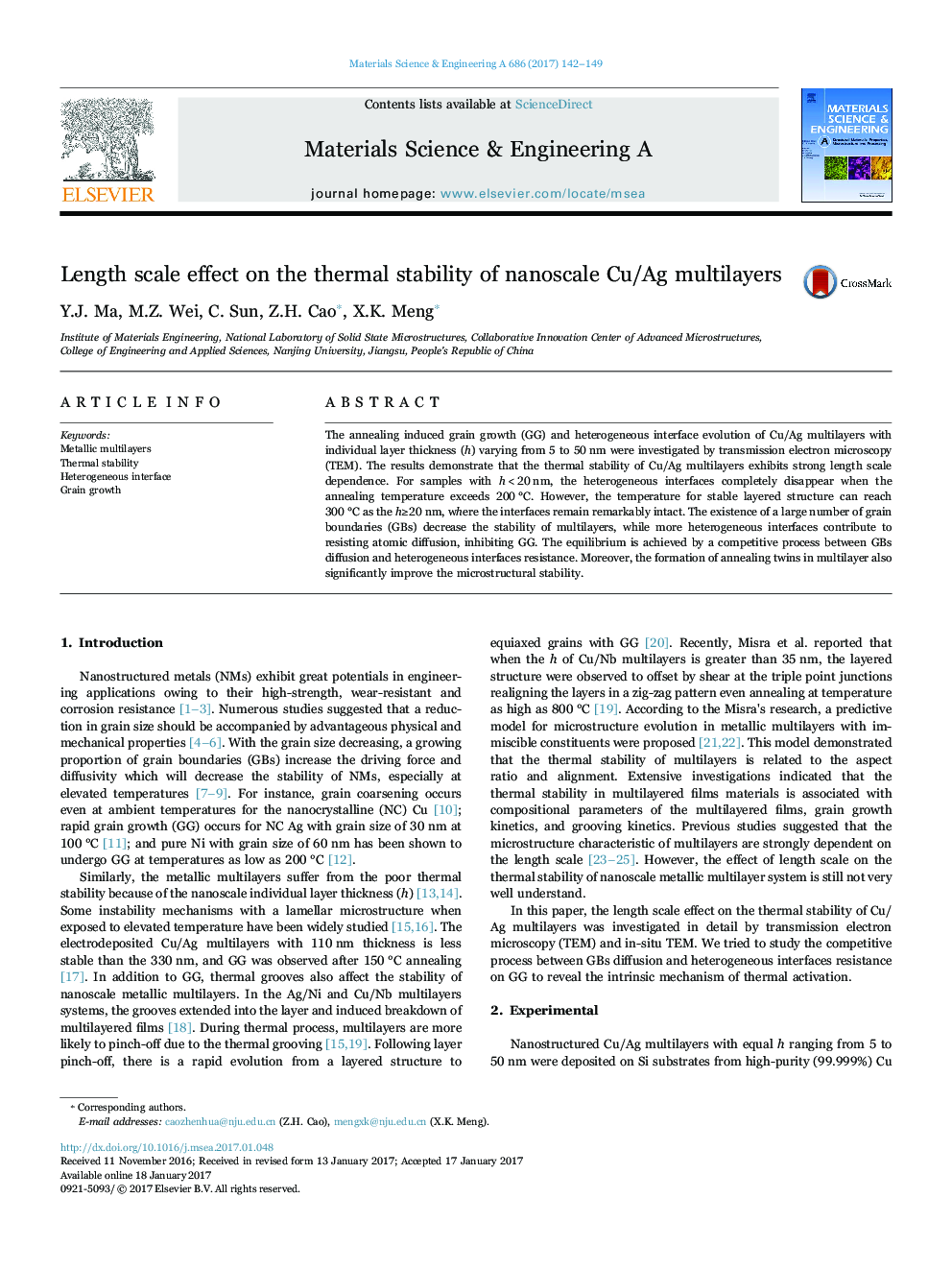| Article ID | Journal | Published Year | Pages | File Type |
|---|---|---|---|---|
| 5456728 | Materials Science and Engineering: A | 2017 | 8 Pages |
Abstract
The annealing induced grain growth (GG) and heterogeneous interface evolution of Cu/Ag multilayers with individual layer thickness (h) varying from 5 to 50 nm were investigated by transmission electron microscopy (TEM). The results demonstrate that the thermal stability of Cu/Ag multilayers exhibits strong length scale dependence. For samples with h<20 nm, the heterogeneous interfaces completely disappear when the annealing temperature exceeds 200 °C. However, the temperature for stable layered structure can reach 300 °C as the hâ¥20 nm, where the interfaces remain remarkably intact. The existence of a large number of grain boundaries (GBs) decrease the stability of multilayers, while more heterogeneous interfaces contribute to resisting atomic diffusion, inhibiting GG. The equilibrium is achieved by a competitive process between GBs diffusion and heterogeneous interfaces resistance. Moreover, the formation of annealing twins in multilayer also significantly improve the microstructural stability.
Related Topics
Physical Sciences and Engineering
Materials Science
Materials Science (General)
Authors
Y.J. Ma, M.Z. Wei, C. Sun, Z.H. Cao, X.K. Meng,
